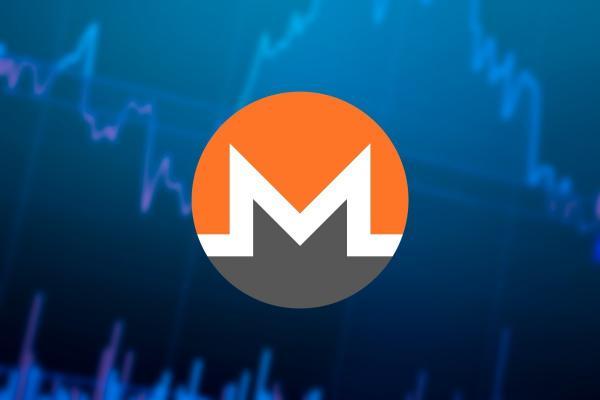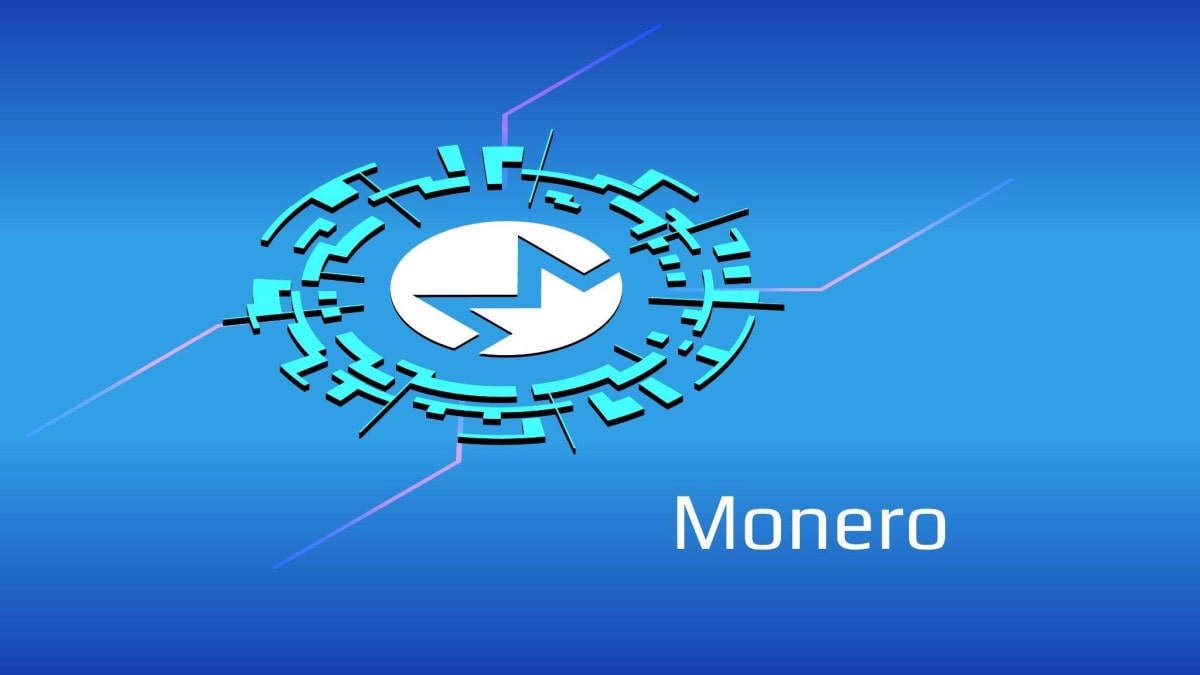

What is Monero (XMR)?
So, what has made Monero so popular? The answer is very simple: its features are oriented to the total privacy of its users, but this isn’t everything. In this guide, we will explain everything behind it and what makes it so special.
The first thing you have to know is that it is a monetary system whose premise is the security of its users, privacy and the fact that it is impossible to trace. To achieve this, Monero uses special cryptography that, in turn, is responsible for guaranteeing the confidentiality of all its transactions to prevent them from being linked to a user.
Monero: What it is, and how it works

Monero (XMR) was launched in 2014 as a cryptocurrency created using blockchain technology and operates on it. These blockchains are public ledgers where all the transactions and activities of the users that make up said network can be seen.
In the case of the Monero blockchain, it has been created to completely hide the identity of its users by disguising the addresses used by them. Therefore, when making a transaction, it will not be possible to visualise the identity of the senders or recipients, nor the amount of the transaction.
On the other hand, mining this cryptocurrency is completely different and is based on an egalitarian principle that establishes that all people are equal and, therefore, deserve the same rights. This explains the fact that, during the launch of Monero, its main creators and developers did not personally attribute the achievement since they had counted on the contribution and support of a large community that allowed the virtual currency to be further developed.
Thus, in their mining process, the miners obtain rewards for their activities, joining a mining pool that allows them to mine collectively or individually. In addition, the process can be done from any computer and with any operating system (Windows, macOS, Linux, Android or FreeBSD) without the need to install special hardware, such as ASICs (Integrated Circuits for Specific Applications).
How Monero has managed to improve privacy
The ring signatures and the stealthy addresses have been the technological key that has allowed the unchanging privacy of Monero.
These signatures allow the user who is sending the cryptocurrency to remain anonymous against the other users of the group. These are anonymous digital signatures that don't reveal who signed the transaction.
To generate these signatures, Monero uses a combination of keys from the sender's account and associates it with other public keys that are part of the blockchain, making it a unique and private signature. This process allows the sender's identity to be hidden and makes it impossible to determine which was the key used by one of the members of the group for the complex signature to occur.
For its part, stealth addresses are responsible for providing even more privacy. These are generated randomly for each of the transactions that carry the recipient's name to hide their true address and, in turn, hide the recipient's identity.
Additionally, RingCT (Ring Confidential Transactions) was added to Monero's features in 2017 to hide the amount of the transaction and became mandatory for each of the transactions within the network.
What is the difference between Monero and Bitcoin?

Bitcoin was the first cryptocurrency created and launched on the market in 2014. It works as a protocol that protects the identity of its users through pseudo name addresses, that is, combinations generated randomly with letters and numbers.
The truth is that, despite being extremely private, all Bitcoin addresses and transactions are registered in the blockchain, so they can be seen by any user who wishes to do so. Even the mentioned pseudo-name addresses aren't entirely private since the transactions carried out by any user can be linked to the same address and, therefore, the public, the government or any other person would have the possibility to watch it.
Another advantage that Monero presents against Bitcoin is its fungibility, which means that two units of Monero can be substituted mutually, and there is no difference between the two. For example: if you have two $1 bills, even though they have the same value, they aren't fungible since each has a unique serial number. The same happens with Bitcoin.
On the other hand, two pieces of gold of the same grade and weight have the same value and are fungible since they don't have any characteristic that distinguishes them. This is how Monero works.
Finally, Bitcoin registers each of its transactions in the blockchain, which serves to detect fraud, gambling or theft in which a certain amount of Bitcoin is involved. If this is the case, the accounts involved in the illegal activity are blocked, suspended or closed.
Monero's transaction history, on the other hand, isn’t traceable. What it offers its users is to be part of a much safer network, where retention or rejection by other users who consider that their coins are of dubious origin is impossible
Why doesn't Monero need an ASIC?

The manufacturing costs of ASICs for Monero would be very high and, therefore, not worth it.
At the end of 2017, the main producer of ASIC hardware, Bitmain, made an announcement where it clarified that it would produce similar hardware to extract the CryptoNight algorithm and guess what... Monero is one of the select cryptocurrencies that use this algorithm, so they decided to make some changes. First, they updated its algorithm. Second, they modified the work test protocol.
Monero's decentralisation is the main reason it doesn't need an ASIC. In the same way, as Monero indicates in his blog, centralisation begins when the ASICs are introduced into the system because only a few companies can create hardware of that magnitude. So, if one of these companies wants to implement a change, the platform could be compromised. That's why the main developers and the Monero community are constantly updating the Hash algorithm to avoid using ASICs at all costs.
The key challenges Monero faces
The privacy Monero offers has been the main feature that has attracted many investors... but has also brought in problems.
Privacy and making searches impossible allow Monero to be used for illicit activities in markets where drugs and games of chance are present. In fact, there has been more use of this cryptocurrency in dark web markets, such as Oasis and AlphaBay.
The hackers have been responsible for creating software that directly affects computers, managing to mine Monero and send it to North Korea. So, while privacy and evasion of the law by Monero has brought beneficial consequences, it also presents high risks that must be studied before performing any transaction.
The future of Monero
There is no doubt the future of Monero is projected to be even more open and decentralised, which will make it an even more attractive cryptocurrency for those who have privacy as a premise.
In addition, being one of the few coins that have not been created based on Bitcoin, its potential is unlimited, and its growth in such a short time has proven it. Its future seems really promising and attractive for those looking to invest.
How to buy Monero

The Monero platform recommends that the best way to acquire your XMR tokens is to acquire a Monero wallet before making the first purchase. This is because the platform operates with its own wallet and this, in turn, is compatible with many operating systems. Then, you will need to choose the type of exchange you want to make, whether you will use fiat money to make the purchase or another cryptocurrency.
Bear in mind that the purchase or exchange of cryptocurrencies involves a series of difficulties. For example, registering in the market, verifying the account or encountering hackers who steal your funds. In addition, and due to the market's high volatility, you run great risks of losing money. One of the clearest examples can be seen with Bitcoin and the depreciation of its token value.
But it doesn't mean it's too late to participate in the cryptocurrency market. There is a solution that will allow you to handle cryptocurrency positions in various market conditions: CFDs (Contracts for Difference). These allow you to open long and short positions and offer you the leverage: invest significantly higher amounts than you have at the moment.
Please note that trading CFDs with leverage can be risky and can lead to losing all of your invested capital.
Libertex lets you work with CFD right now and is completely free on the demo account. You only need to register and you can practice trading whenever you want. In case it's not enough, our knowledge base will help you know and master everything related to trading.
Disclaimer: The information in this article is not intended to be and does not constitute investment advice or any other form of advice or recommendation of any sort offered or endorsed by Libertex. Past performance does not guarantee future results.
Why trade with Libertex?
- Get access to a free demo account free of charge.
- Enjoy technical support from an operator 5 days a week, from 9 a.m. to 9 p.m. (Central European Standard Time).
- Use a multiplier of up to 1:30 (for retail clients).
- Operate on a platform for any device: Libertex and MetaTrader.